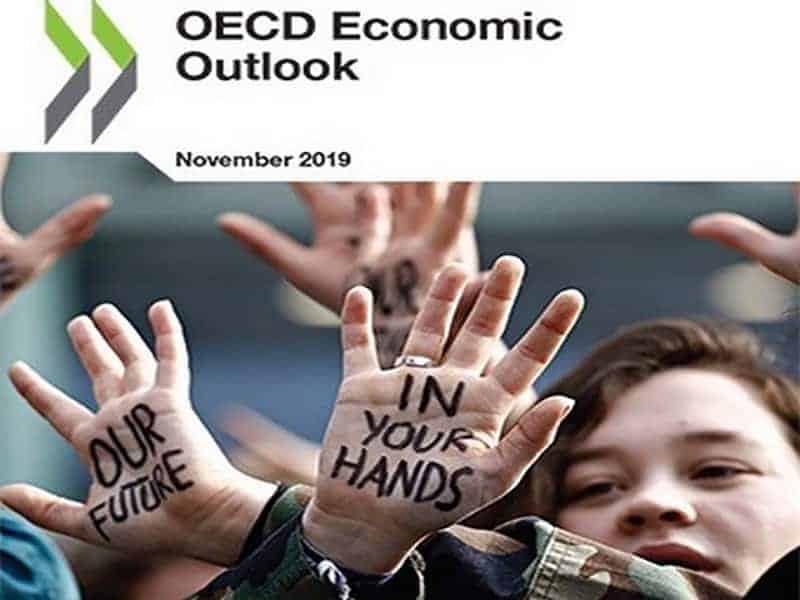Paris: India’s monetary and fiscal policies have become accommodative as election-related uncertainties fade, raising the prospect of economic growth recovering to just under 6.5 percent by the next financial year (2020-21), the Organisation for Economic Cooperation and Development (OECD) has said.
India’s economy grew by 6.8 percent in 2018-19. The OECD marginally cut its growth forecast for 2019 to 5.8 percent but said it will pick up to 6.2 percent in 2020 and further to 6.4 percent in 2021.
The OECD Economic Outlook’s second edition for 2019 says New Delhi’s income support scheme for farmers and good monsoon are supporting private consumption. The cut in corporate income tax will support corporate investment.
Inflation and the current account deficit will remain moderate given the relatively large spare capacity in the economy and low oil prices. However, job creation remains a challenge.
At the same time, the stress in non-banking financial companies coupled with changes in insurance regulations has affected car sales, while volatility in fuel prices is weighing on consumer confidence.
Construction has been hurt as non-banking financial companies contribute a large share to its financing, weighing on job creation, income, and consumption. Industrial production and related imports have weakened. Exports have suffered from the slowdown in foreign demand.
However, they have benefitted from improvements in the Goods and Services Tax (GST) administration, enabling exporters to get faster tax refunds while efforts to improve trade infrastructure, logistics and processes are starting to pay off.
Overall, India has succeeded in seizing some of the market shares lost by other countries and exports have proved relatively resilient.
Headline consumer price inflation has remained close to the 4 percent target and core inflation is adjusting down. Spare capacity, a good monsoon, the steady rupee, relatively low oil prices and modest increases in minimum support prices for summer crops are all contributing to keeping price pressures low.
The OECD says raising more revenue from property and personal income taxes and improving the financial situation of public banks and enterprises will be key to finance better public education and health services. To boost job creation and reduce informality, efforts to modernize labor regulations should continue.
The Reserve Bank of India has cut policy rates by 135 basis points since early 2019 and maintains an accommodative stance. Looking ahead, private investment will bounce back as capacity utilization rises and the cost of borrowing for the corporate sector declines.
The ongoing resolution of distressed assets of non-financial corporates under the Insolvency and Bankruptcy Code is expected to unlock resources for new investment projects.
Recent reforms to improve the ease of doing business — including measures to liberalize foreign direct investments, lower corporate income tax rates and efforts to improve judicial services and contract enforcement — will also help.
Rural consumption will pick up, thanks to the good monsoon, the full implementation of the new income support scheme for farmers and measures to reduce liquidity stress in non-banking financial companies.
The increased ability to pass and implement reforms — as illustrated with the recent liberalization of FDI and disinvestment plans — represents a positive risk to the outlook, said the OECD.

